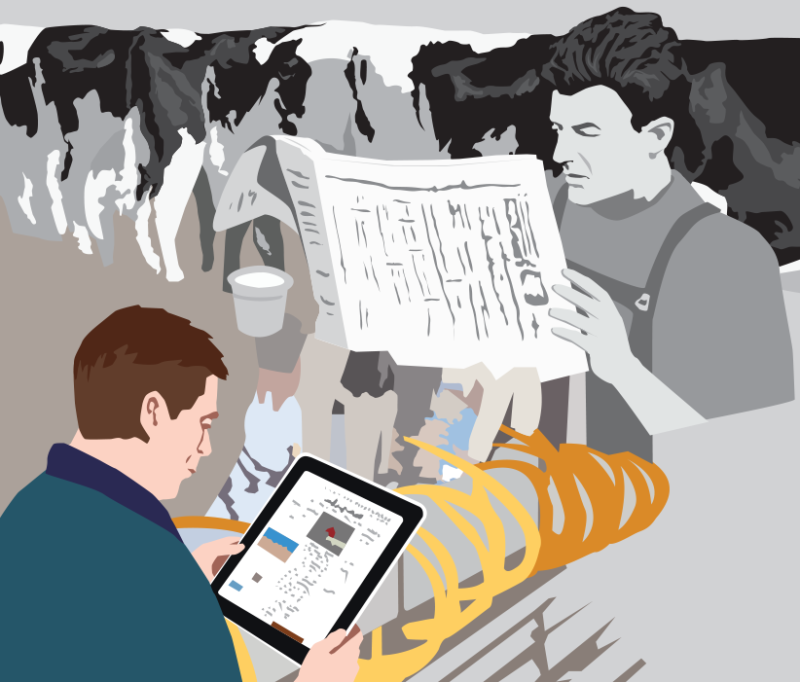Banks, casinos, jewelry stores, museums, Federal Reserve banks – they have given us the settings of some of the greatest heist films ever. We’ve all seen daring and sophisticated thieves take their high-stakes shot at diamonds or bags of cash or desperate robbers trying to fund a better life by stopping a train with gold on it. It’s a trope as old as the screen itself, and maybe even on the verge of being played out.
Nonetheless, perhaps there’s still a heist movie yet to be made.
In October 2024, an establishment in London suffered the devastating theft of £300,000 (about $380,000) of inventory. It’s a loss that’s going to be tough to come back from. However, it wasn’t precious jewels or priceless artwork.
It was cheese.
Neal’s Yard Dairy was contacted by someone posing as an agent for a supermarket chain in France. He requested 22 tons of high-end cheddar, apparently having done enough research not to raise the suspicions of Neal’s Yard. The order was prepared and delivered to a warehouse in north London. Afterward, however, contact was broken, and all 950 wheels of cheddar disappeared. Jamie Oliver, the famous English chef and TV personality, took to social media to ask followers to keep an eye out for “posh cheese sold cheap.” Nonetheless, it’s expected that the goods are heading to Russian or Asian markets.
The cheddar robbery has left many baffled and shaking their heads. The same question gets asked over and over: How easy is it to move that much cheese on the black market? However, perhaps the heist shouldn’t be that surprising. In 2011, the Center for Retail Research in Britain found that cheese is the most stolen food in the world. In fact, 4% of all cheese ends up filched.
While Londoners are calling what happened “The Great Cheddar Robbery” (or “Grate” Cheddar Robbery, although I’m not sure the pun works), the theft from Neal’s Yard Dairy was far from the only cheese heist in history.
In 2016, thieves stole 100 wheels of Comté in the eastern French town of Goux-les-Usiers. Worth close to $1,000 per wheel, the theft was no small matter. Being made on the farm where it was produced, burglars pried open the storage area with a crowbar and were never caught. The same thing happened to a Dutch farmer south of Amsterdam in 2022, waking up to find his storage area opened and $23,000 worth of cheese gone for good.
Perhaps a blessing, Wisconsin cheese thieves seem to be less skillful. In 2013, a man named Veniamin Konstantinovich Balika forged some paperwork and drove away with $200,000 worth of Muenster cheese from a plant in Cashton, Wisconsin. He was caught on the New Jersey turnpike when the police spotted the truck. Three years later, a group stole 70,000 pounds from a plant in Germantown and attempted to sell it in nearby Milwaukee. The potential buyer became suspicious when he was offered the cheese for $1 a pound and called the cops. The gang was busted the night after the heist.
It’s no secret that certain parts of Italy experience particular criminality, some of it “organized.” Parmesan (Parmigiano Reggiano) is a particular target, being worth several hundred to several thousand dollars per wheel. Additionally, the fact that it needs to be stored for at least a year or more makes it more vulnerable to larceny. For that reason, there are about 300,000 wheels (worth about $200 million) kept in bank vaults in Italy. In fact, Consorzio del Formaggio Parmigiano Reggiano, the official body of Italian parmesan makers, estimates that over $3 million in parmesan cheese is stolen in Italy every year. With that in mind, the 4% figure starts to make more sense.
I love cheese. I find it hard to think of a meal that it couldn’t improve. The fact that it’s such a hot commodity only makes me respect it more. To date, a 63-year-old man was arrested in the London cheddar robbery, but thus far he hasn’t been charged and no details have been released. Although it is unlikely, part of me hopes that he wasn’t going to sell it to Russia. Instead, I would rather believe that he, too, was a cheese lover and simply thought the risk was worth being surrounded by 950 wheels of cheese in his home. I hope he intended to live off it – by eating cheddar at every meal and maybe bartering the odd wheel here and there.
Either way, the one thing we can be sure of by now is that the cheese heist business is a risky endeavor. It’s probably better to stick to diamonds and cash.


.jpg?t=1658551847&width=640)



